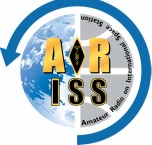Die Übertragungen finden mit dem Call RS0ISS in zwei Zeitfenstern mit einer Unterbrechung für einen ARISS- Schulkontakt statt.
Die vorläufigen Zeiten:
Erstes Zeitfenster: 3. bis 4. Oktober, Beginn Freitag 14:00 UTC, Ende Samstag 10:00 UTC.
Zweites Zeitfenster: 4. bis 6. Oktober, Beginn Samstag 11:00 UTC, Ende Montag (noch zu bestimmen). In beiden Zeitfenstern werden die gleichen Bilder gesendet.
Weitere Infos gibt es unter: https://www.ariss.org/upcoming-sstv-events.html
Maustag z.B. in NRW am 3.10.25
In Leverkusen und Pulheim wird der Amateurfunk den Kindern näher gebracht (schon ausgebucht), aber es gibt noch Gelegenheiten in Mettmann beim DARC-OV Neandertal R09, beim DARC e.V. Ortsverband Essen L05 und in Gelsenkirchen im Clubheim Amateurfunkverein N06. Weitere Türen-auf-Infos gibt es unter
https://www.wdrmaus.de/tuer_oeffner_tag/2025/index.php5
HamTV-Empfangssysteme gesucht
Die HamTV-Fusionstation sammelt ein Netzwerk von Amateur-TV-Empfangsstationen, die empfangene ISS HamTV Digital-ATV-Daten auf unseren zentralen Server hochladen können, der einen kontinuierlichen Video-Feed von der ISS erstellt. Der Output der Fusionsstation wird verwendet, um einen länger andauernden und zuverlässigeren Video-Feed für die Frage- und Antwortrunden in den Schulen bereitzustellen. Je mehr Empfangsstationen sich daran beteiligen, desto besser ist natürlich der Video-Feed.
Alles, was Du dafür benötigst, ist ein normales HamTV-Empfangssystem und eine zusätzliche Software, um die Daten über das Internet zu senden. Die zusätzliche Software ist bereits in das Portsdown-4-Empfangssystem integriert, und es ist auch eine Windows-Version verfügbar.
Wenn Du interessiert bist, nimm Kontakt auf zu Ciaran unter hamtvops@ariss-i.org
Der Fusions-Output ist verfügbar unter https://live.ariss.org/hamtv/
Dave, G8GKQ
Quelle: BATC-Forum
ARISS radio contact between OR4ISS and ON4ISS on October 9, 2025
Astronaut Mike Fincke, call sign KE5AIT, will operate the amateur radio equipment aboard the International Space Station. Mike will answer questions from students in Namibia during this live amateur radio contact. The ARISS telebridge ground station ON4ISS in Belgium is conducting this radio contact for Namibia Scientific Society.
This live radio amateur contact is scheduled for Thursday, October 9, 2025 at 10:37 UTC. Astronaut Mike Fincke will operate the amateur radio station call sign OR4ISS aboard the ISS and will call the ARISS telebridge ground station call sign ON4ISS in Belgium. This is an ARISS telebridge contact with Namibia Scientific Society, Windhoek, Namibia. You can listen live to astronaut Mike Fincke on board the ISS at 145.800 MHz in FM (plus/minus 3 kHz Doppler shift).
The event will be streamed live:
https://youtube.com/live/tIHhOm3JNMQ?feature=share
English is the expected language of communication for this amateur radio contact.
Students Questions:
1. Would you recommend your current occupation to another individual?
2. What form of communication does one use in space (is there internet in space)?
3. If light takes millions of years to reach us from distant galaxies, could some of those galaxies already be gone by the time we see them?
4. If you could take one thing from Earth into space that makes you feel at home, what would it be?
5. How do you overcome the challenge of missing home and family as you travel in space?
6. What life support systems help astronauts survive in space?
7. If black holes and white holes exist, could there also be something like a "grey hole"?
8. What impacts does the launch, landing, and stay in the space station have on the human body?
9. How does a massive star dying create a black hole so powerful that time slows down and bends its light? Why do we only see its effects and not the black hole itself?
10. Why is dehydrated food commonly used in space missions, and what types of food and beverages do you consume while aboard the spacecraft?
11. What would happen if something falls into a blackhole?
12. How is life in space?
13. How does one know where to land when going to the moon (what gives you direction)?
14. Why do most galaxies seem to have supermassive black holes at their centers, and what roles do these black holes play in galaxy formation?
15. What is the most surprising thing you had to learn on Earth that actually helps you the most in space?
16. What role will robots and artificial intelligence play in future space missions?
17. What interesting science experiments are you working on aboard the International Space Station (ISS)?
18. What would happen if Saturn's moon Tethys were to come near or collide with Earth?
19. How are space vehicles able to dock to the space station and do they all return to Earth?
20. How do you keep time in space, and how does it differ from Earth's time zones and calendar?
21. Can stars really "live" and die like people say?
ARISS activities are aimed at students and enthusiasts with the aim of inspiring them in the sciences with this demonstration of amateur radio communications from space. We invite radio amateurs and space enthusiasts to tune in to this exciting moment.
Check out the ARISS website and follow ARISS on the official social media channels for more updates.
https://www.ariss.org/contact-the-iss.html
Im Dialog mit dem DARC-Vorstand - online am 23. Oktober
In regelmäßigen Abständen tritt der Vorstand des DARC e.V. auf dem Videokonferenzserver treff.darc.de und auf Veranstaltungen in den Dialog mit den Mitgliedern. Am Donnerstag, 23. Oktober, um 19 Uhr haben DARC-Mitglieder auf dem Videokonferenzserver erneut die Möglichkeit, dem Vorstand des DARC e.V. ihre Fragen zu stellen.
Quelle: darc.de
Vollduplex-FM-Fähigkeiten gesucht
Satellitenfunkbegeisterte in Schweden fordern ein Dutzend Hersteller japanischer und chinesischer Handfunkgeräte auf, Funkgeräte mit Vollduplex-FM-Fähigkeiten herzustellen, damit Nutzer während der Übertragung ihre eigene Downlink-Signale empfangen können. In einem offenen Brief an verschiedene Unternehmen – darunter AnyTone, Kenwood, TYT, Yaesu und Alinco – erklärte AMSAT-SM, dass Funkamateure nach Geräten suchen, die es dem Betreiber ermöglichen, gleichzeitig auf verschiedenen Bändern zu senden und zu empfangen, ohne dass es zu einer Desensibilisierung kommt. Laut einem Bericht des AMSAT News Service verfügte ein älteres Kenwood-Modell über diese Funktion, wurde jedoch aus dem Sortiment genommen, und es gibt derzeit kein Ersatzprodukt auf dem Markt. Der Brief wurde von Lars Thunberg, SMØTGU, unterzeichnet. Eine Kopie davon ist auf der Website von AMSAT-SM veröffentlicht. Der Bericht des AMSAT News Service besagt, dass eine Handvoll der Dutzend Unternehmen geantwortet haben und ein Unternehmen – das nicht genannt wurde – angab, dass sie über die Anfrage diskutieren würden. Weitere Details waren nicht verfügbar.
Jason Daniels VK2LAW
Quelle: AR-Newsline


